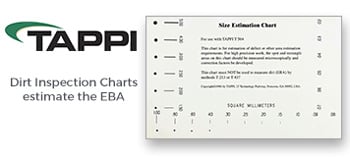Predicting High Speed Blade Coating Runnability, 2002 Coating Conference Proceedings
K. Okomori, M. Yamaguchi, M. Suzuki and H. Morii
The effect of coating and basepaper properties on high-speed blade coater operations was investigated. The temperature change under high-shear rate conditions (denoted TCH), the high-shear rate viscosity obtained with slit die, and the water retention value are compared to blade loading requirements and poor runnability. Also, the temperature change during application (denoted TCB) was found to be related to good operation of the blade coater.
A large value for the temperature change (TCB) indicated poor coating runnability or the formation of stalagmites. In the case of poor coating runnability, high blade pressure was needed to obtain a target coat weight. TCB depends on water retention, fluidity of coating, and properties of basepaper. The temperature change of coating at high shear rate and the viscosity obtained with the slit die are the best indicators of coating fluidity under blade.
TCH increases with solids content until a catastrophic condition is reached. The solids content of this turning point was different for each coating formulation. Changes in the solids content have a significant impact on TCH. TCH is linked to temperature change during coating and the formation of stalagmites. A good estimation for the onset of stalagmite formation includes water retention, high shear rate viscosity obtained with a slit die, and TCH.





